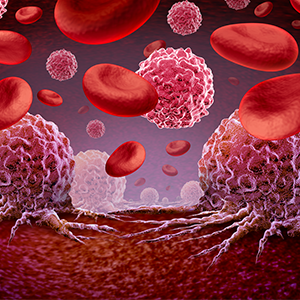-
Heart failure and skilled nursing facilities: The importance of getting the facts
 ROCHESTER, Minn.— For many people diagnosed with heart failure – which almost invariably results in a hospital stay – the next stop is a skilled nursing facility. While their physician often will reassure them that it’s just for a short time until they can get back to their home, in reality, that stay is long (averaging 144 days). And often they find themselves back in the hospital and back to a nursing facility again.
ROCHESTER, Minn.— For many people diagnosed with heart failure – which almost invariably results in a hospital stay – the next stop is a skilled nursing facility. While their physician often will reassure them that it’s just for a short time until they can get back to their home, in reality, that stay is long (averaging 144 days). And often they find themselves back in the hospital and back to a nursing facility again.
In a new study published in Mayo Clinic Proceedings, Mayo Clinic researchers and collaborators report new understanding and new hope for heart failure patients.
“We really wanted to understand the complete experience of heart failure patients,” says Sheila Manemann, a health care delivery researcher at Mayo Clinic and the study’s first author.
“To do so, we needed to look at not just outpatient and hospital information, but that from skilled nursing facilities,” she says. “This required linked data from across the community and across the lives of these patients.”
The team studied the medical records of 1,498 patients who were residents of Olmsted County, Minnesota, between Jan. 1, 2000, and Dec. 31, 2010, and initially diagnosed with heart failure during that time.
“After adjusting for various contributing risk factors and conditions, we found that being in a skilled nursing facility means a heart failure patient is 50 percent more likely to end up back in the hospital than patients who were able to return home,” says Manemann.
Using linked medical records from the Rochester Epidemiology Project, a unique resource that enables longitudinal, population-based epidemiologic studies across an entire community, the research team was able to examine detailed medical information from nearly all sources of care. They connected this to skilled nursing facility usage information obtained from the Centers for Medicare & Medicaid Services.
The team found that more than 40 percent of heart failure patients were admitted to a skilled nursing facility at some point after diagnosis. Among these, 37 percent were discharged only to return to a skilled nursing facility at least two more times.
The researchers also learned that, in general, hospital readmissions for patients from a skilled nursing facility were for reasons unrelated to cardiovascular function.
Learning these facts, “we wanted to try to identify ways to improve outcomes for patients released to a skilled nursing facility, as well as potentially for patients overall,” says Véronique Roger, M.D., a cardiologist at Mayo Clinic and the study’s senior author.
The team determined that one of the key factors in estimating a person’s likelihood to be readmitted to the hospital during a stay in a skilled nursing facility is his or her general ability to carry on the activities of daily living upon entering the facility.
“The level of activity a patient has when he or she enters a skilled nursing facility is an important predictor of whether he or she will be readmitted to the hospital and how [he or she] will do in the long term,” states Dr. Roger.
Understanding this opens the door for more informed patient-doctor conversations, as well as potential health and wellness interventions.
“For me and my colleagues, it is important for us to understand the other conditions that travel with heart failure,” says Dr. Roger. “We need to understand the big picture to be able to treat the whole patient.”
She and her colleagues would like to see programs to increase mobility for heart failure patients in skilled nursing facilities.
“We want to make it much more common that heart failure patients who transition to a skilled nursing facility are able to return home,” she says. “Most importantly, we’d like to see healthier individuals able to consistently participate in life activities.”
Dr. Roger also supports efforts to increase individual activity levels at all stages of life for better health and wellness – and potentially to prevent heart failure in the first place.
Dr. Roger is the Elizabeth C. Lane, Ph.D., and M. Nadine Zimmerman, Ph.D., Professor of Internal Medicine, and the medical director of the Mayo Clinic Robert D. and Patricia E. Kern Center for the Science of Health Care Delivery. The Rochester Epidemiology Project is a collaboration of clinics, hospitals and other medical facilities in Minnesota and Wisconsin, and involves community members who have agreed to share their medical records for research. It is administratively managed through the center.
###
About Mayo Clinic
Mayo Clinic is a nonprofit organization committed to clinical practice, education and research, providing expert, whole-person care to everyone who needs healing. For more information, visit http://www.mayoclinic.org/about-mayo-clinic or https://newsnetwork.mayoclinic.org/.
MEDIA CONTACT
Kelly Reller, Mayo Clinic Public Affairs, 507-284-5005, newsbureau@mayo.edu
Related Articles







